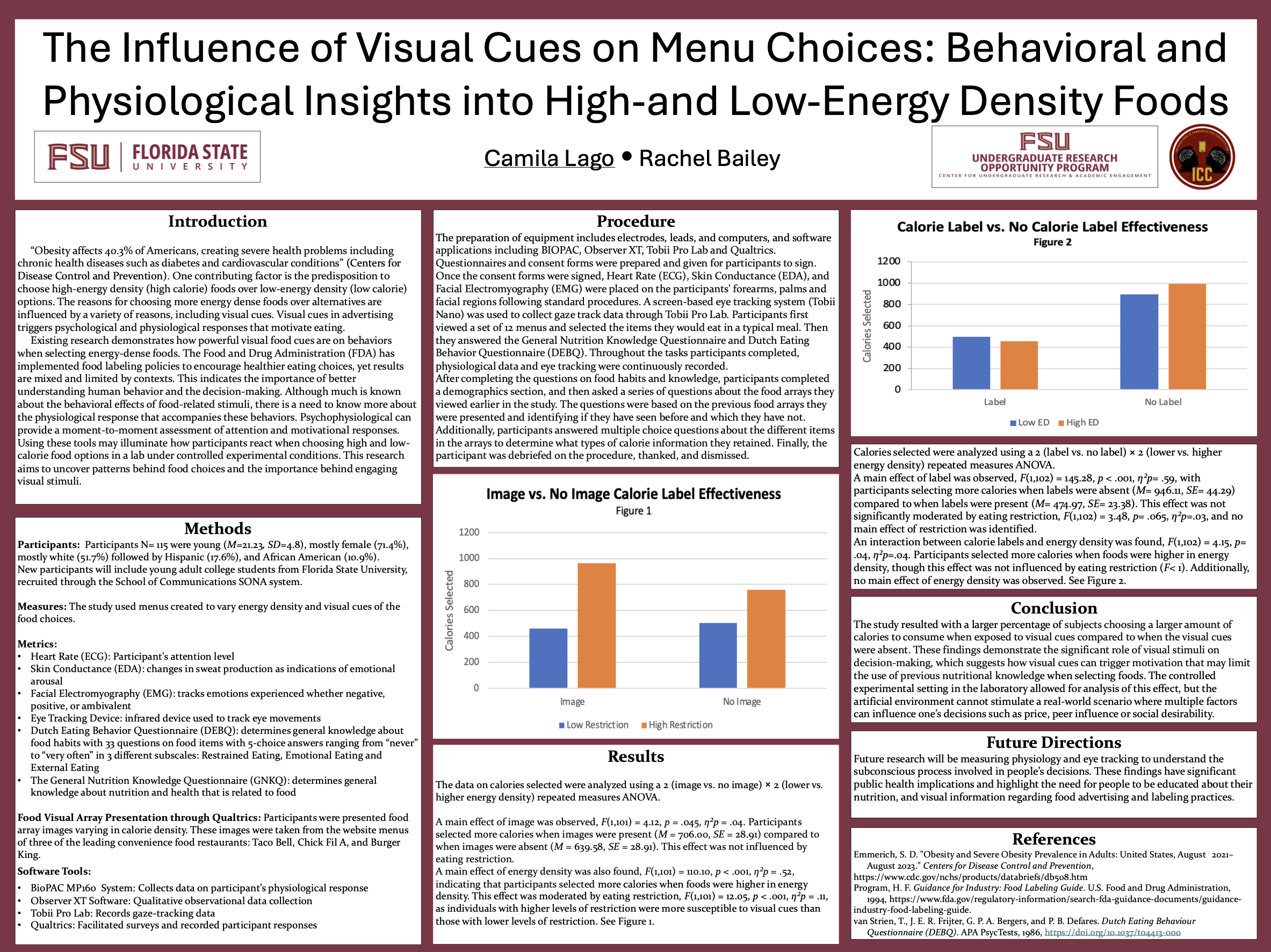Research Symposium
25th annual Undergraduate Research Symposium, April 1, 2025
Camila Lago Poster Session 2: 10:45 am - 11:45 am/ Poster #81

BIO
Hello, my name is Camila Lago, and I’m a sophomore on the pre-med track at FSU. I am currently a UROP student in Dr. Rachel Bailey’s Lab, and I’m researching the effect of visual food cues on menus. As a part of Dr. Rachel Bailey’s lab, I collect psychophysiological data, eye-tracking data, and analyze how those responses occur in correlation to visual cues. From my research, I have gained a strong interest in behavioral science, communications, and psychology and I am excited to continue exploring my interests in these fields.
The Influence of Visual Cues on Menu Choices: Behavioral and Physiological Insights into High-and Low-Energy Density Foods
Authors: Camila Lago, Rachel BaileyStudent Major: Biology
Mentor: Rachel Bailey
Mentor's Department: Communication Science and Disorders Mentor's College: College of Communication and Information Co-Presenters:
Abstract
This research investigates participants’ behavioral and physiological responses when exposed to visual cues on menus, comparing high-energy density versus low-energy-density food choices. The research explores how foods of high-energy density, which are linked to an increase in negative health outcomes including obesity and an increase in chronic conditions such as diabetes, cardiovascular disease, and certain cancers, have a stronger appeal in consumer purchases due to their presentation. Understanding physiological responses to food-related stimuli allows for a better understanding of human behavior and decision-making processes. The data collection to gather physiological responses under controlled conditions includes facial EMG, heart ECG, skin conductance, and eye-tracking data during experimental tasks. Additional qualitative feedback about participants’ behavioral patterns and eating habits is taken during the experiment using Qualtrics. In this research, participants demonstrate a tendency to select high-energy-density foods, even with calorie labeling present. This behavior appears to occur due to the dominance of appealing visual stimuli and the consumer’s lack of nutritional awareness. The findings emphasize the need for increased public awareness about food choices and the subconscious impacts of visual stimuli in food advertising and labeling.
Keywords: Communications, Food Science, Psychology


